March 20th, 2023
Lt. James Forsyth wrote a fabulously prescient and useful hunting ballistics book in 1861 from his unique perch in Colonial India, “The Sporting Rifle and its Projectiles.” Using single shot and double barreled muzzleloading rifles, with mere black powder as the propellant, Forsyth squared off against the most dangerous wild animals modern humans have met in battle since the end of the Pleistocene, when our forbears wiped out all of the even more dangerous and ill-tempered megafauna with mere stone tipped spears.
Hold this thought for a minute.
Today’s hunter thinks he needs a soulless, faceless, characterless Three Million Magnum plastic and stainless steel rifle getting 1/8″ accuracy at three miles when topped with the Hubble Telescope, capable of blasting a twelve-inch gaping hole in a steel plate at that same three miles. But the truth is these modern gee-whiz gizmos are dumbing down, blunting, ruining and corrupting the most beautiful, honest, and pure hunting instincts and abilities we have inherited from our fur-clad ancestors.
Sniping animals from impossible distances with weapons they cannot possibly detect or withstand is nothing more than aerial bombing or target shooting at vulnerable living creatures who deserve our greatest respect and admiration, and upon whom we should only inflict our will when we are offensively at their own level of defense.
That is, what honest sport is there in assassinating an unsuspecting wild animal whose honed instincts protect it from every other natural predator, whose own predatory skills must be equally or better honed in order to close the distance and survive another day on the flesh of the prey animal?
What honor is there in these long distance assassinations? I say none.
You say you like to hunt? Okay then, hunt, dammit. Actually hunting means: Get outside on the landscape of your choice and perfect your actual hunting skills. Learn to play the wind, move quietly, use the topography to your advantage, be patient, be attentive, coordinate well with other hunters, and understand the life and habits of your quarry. Then and only then will you be an actual hunter worthy of the honorable name of hunter.
Enough of this hochsitz heated shooting box overlooking a planted field while waiting for some pet buck to step out five minutes before shooting light ends crap. This is not hunting, it is sitting on your lazy ass and relying on high technology to do the real work for you. Unless you are physically disabled or elderly, a status I myself am approaching and fighting hard every step of the way, do not dishonor yourself with this beyond early morning and late afternoon times. Or at least do not dishonor real hunters who actually hunt by calling yourself one of them when you do it exclusively.
Back to Forsyth, who though slight of stature was of immense bravery and manly stoic British character. (Oh, the British…a great people, once, and with some yet living among them who remember the old ways and who could lead their people forward through these dark days…if they would but will it.) Anyhow, Lt. Forsyth was a small but tough little bastard who faced down 8,000-pound rogue elephants, 3,000-pound gaur bison, and 600 pound male tigers, with mere black powder muzzleloading rifles at powder-burn distances.
Regardless of how fatal his shot might be, or not, Forsyth’s hunting adventures were very often enriched by the smell of burning fur as locomotive-powered horns and fangs sped close by him on their way to trying to stamp him into a little red puddle. Gunpowder that is still burning as it exits the gun’s muzzle is likely to catch something on fire if it is close enough, including the hide of charging Death. Forsyth embodied the spirit of the hunter, at least the truly manly hunter willing to take a real risk to gain a genuine and truly earned prize. We who are hunters today must all admire Forsyth, and we must seek to emulate him as much as we can in today’s sad world of toxic femininity and low testosterone. Sniping unsuspecting animals with magnum firepower is gay, or lame, or pathetic; choose your own appropriate adjective, but don’t do it. If Forsyth could trust his life and limb to a round ball, then we can trust our tame deer hunts to it, too.
The singular principle of Forsyth’s sporting rifles (not military weapons, which operate on different principles with different goals) was the use of the round lead ball. Like Sir Samuel Baker in Africa and Ceylon, Forsyth found that large round lead balls sufficiently propelled and accurately placed would utterly crush the life force out of dangerous animals, as well as more demur animals one might simply bag for the pot. Bear in mind again that these two men, in particular Baker, discovered the effectiveness of the round ball by literally shooting dangerous game at such close distances that any small mistake would probably mean life-changing injury or death. They got this close in order to ensure the proper placement of their ball, not to test themselves and see if they could cheat Death.
For mere deer and elk, Baker used a shortened Claymore sword. Yes, he hunted and killed deer species of all sizes (including Highland red stag) by hand, at close quarters combat. So, again, do not lower yourself to shooting unsuspecting animals at long distances with gigantic magnum calibers. Be a man and a hu-man, and get out on the landscape within spitting distance and earn that critter. Archery hunters know and do this innately, and are thus justifiably proud of their kills. Same for traditional muzzleloading hunters, spear chuckers, atl-atl launchers, and handgun hunters.
Today, to implement both Forsyth’s hunting spirit and technological advances in ballistics, so that we might be the best firearm hunters we can possibly be and also be the most practical hunters we can be in an increasingly regulated environment, we need a modern firearm that achieves multiple goals simultaneously.
To that end, I propose the single shot and double barreled shotgun, rifled with Forsyth rifling. Any well made utility grade shotgun will do just fine. Most of the old but trusty utility double barrel shotguns like the Savage Fox Model B or the Stevens Model 311 should take a slight rifling just fine, because their ridiculously thick barrels could be just as easily used to club baby seals as seal the explosive gasses of fired ordnance.
OK, pump and semiauto shotguns could have Forsyth rifled barrels, too. It’s just that our skills improve when we are challenged by (self-imposed) limitations.
Forsyth rifling is specially designed for the round ball at black powder velocities between 1,100 and 1,900 feet per second. This rifling has very shallow depth grooves, like 2/1000 of an inch to 3/1000 of an inch, as well as a very slow twist rate. Like one full turn of the cut rifling in 72-90 inches. With appropriate powder charges in modern steel barrels, either black powder or smokeless powders can be safely used, and both fabulous accuracy and devastating knockdown power achieved. The perfect “brush gun,” at the least.
Using black powder, Forsyth satisfactorily tested his rifling and round balls out to 250 yards, saying that within 150 yards it was exactingly accurate. Probably consistent 1-2 inch groups. With big lead balls. Imagine what can be done using smokeless powder.
To my knowledge, nothing like Forsyth rifling is employed in modern shotguns today. Despite or perhaps because of the ongoing craze for shotguns accurately shooting massive slugs (like TarHunt), sabots, and conicals, it seems the lowly but easily obtained and highly effective round ball has been shelved because too many of them were ineffectively shot at deer and bear out of smoothbore shotguns, or shot out of tightly rifled shotgun barrels designed for conical bullets and sabots.
Round balls have received bad press because here in America they have not been correctly matched with proper rifling except for smaller deer and bear caliber-sized single shot muzzleloading rifles. Time for a change!
One constant and legitimate knock against “punkin balls” is that they were terribly under powered, meant more for imprecise point blank shooting at animals in thick cover. This problem can be easily fixed by correctly loading round balls into shotgun hulls for use in appropriately rifled barrels that will give deadly accuracy and destructive force to round balls. Meaning, add more powder! Pap’s old “punkin balls” would have actually shot incredibly accurately had they gone through barrels with Forsyth rifling.
So let us return to a simpler, cheaper, and frankly more manly and effective firearm: The modern shotgun with Forsyth rifling, designed to very accurately and effectively propel a 20, 16, or 12-guage round lead ball (only 350 to 600 grains weight 😳) around 1,500 feet per second. Put these velocity-times-mass kinetic energy numbers in your pipe and smoke it! You will smoke every deer and bear you hit with such powerful projectiles!
And for those hunters concerned about the cost and availability of hunting projectiles and reloading, there is nothing simpler than pouring your own lead round balls and reloading shotgun hulls. Push come to shove with components, you can most easily obtain lead and black powder, and shotgun hulls are reloadable about twenty times each.
Shooting round balls might feel like going backwards, but in many ways the simpler ways and days were better.
Today I submitted a written request to Henry Repeating Firearms, makers of sturdy, accurate, no-frills shotguns perfect for employing Forsyth rifling, that they please consider undertaking such a project. Let’s say to start, manufacture 100 Forsyth rifling single shot break-action shotguns, tested with correct diameter round balls fired from common shotgun hulls with commonly obtainable smokeless and black powders.
If the 100 single shots sell well, then try a few dozen double barrel shotguns that have received some elementary “regulating” whereby the two barrels are brought into pointing harmony with one another. Each barrel should place its ball at or near the landing point of the other barrel, fully converging together within a 75-120 yard distance.
In conclusion, let us say we pursue this particular goal if not for efficiency, effectiveness, and ease of reloading, then to restore our rightful place and reputation as American riflemen, long hunters, frontiersmen with pluck and the best hunting skills on Planet Earth bar none. Shooting round balls within 200 yards is true fair-chase, ethical hunting.
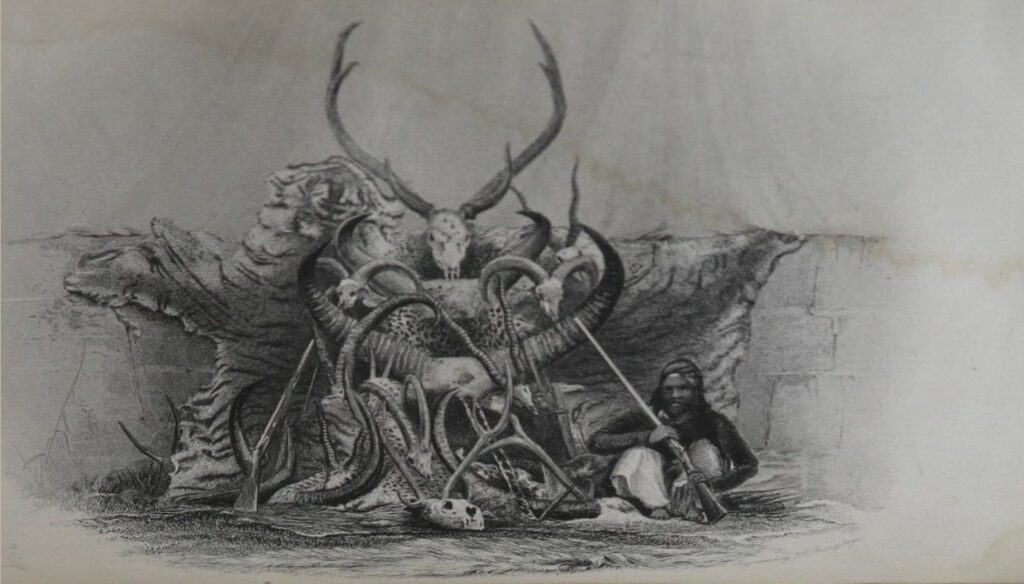
Lieut. James Forsyth of the British Bengal Riflemen Corps posing with some of his well-earned Asian hunting trophies in about 1860. All of which he took with the black powder round ball. Look at the tiger skull that is the size of Forsyth’s entire chest. Note the tiger skin into which quite a few full-sized Forsyths could be stashed all at one time. We hunters today would do well to use Forsyth’s properly arranged round ball technology.
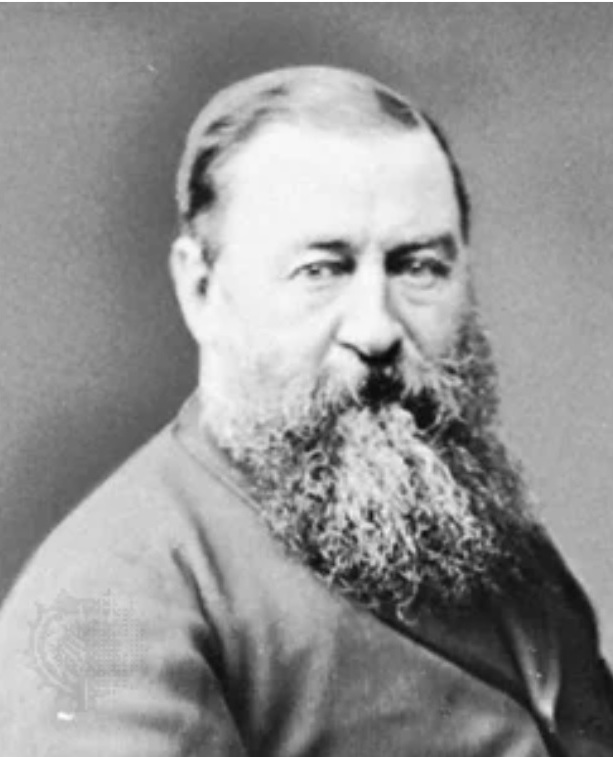
Sir Samuel Baker, gentleman, ultimate stud, patriot, hunter, fearless adventurer and most tender, devoted, and loving husband to a slave woman he liberated. We should all yearn to be like Sir Samuel in some way or another. Maybe it will just be hunting with a powerful round ball instead of a hyperkinetic missile.
August 7th, 2022
Jack Keith brought me to my first Eastern Traditional Archery Rendezvous in 2000, back when it was held at Denton Hill State Park in Potter County, Pennsylvania. Jack was the new and the first president of the Pennsylvania Parks and Forest Foundation, fresh from the Army National Guard out at Fort Indiantown Gap. I helped Jack get the brand new PPFF office set up, and he treated me to a trip up north that changed my life.
At the 2000 ETAR, Jack introduced me to Mike Fedora, who was one of the individual forces behind resurrecting traditional archery in America. Many people will argue that traditional archery never went away, but after Mike Fedora started making modern stick bows in reflex-deflex (a high performance combination of long bow and recurve), a lot more bow makers joined in. Fedora made me a bow to my body’s specifications that fit me like a glove, and that I still use. It is a 52 Lb @ 28″ reflex-deflex that is an extension of my soul. Having hunted small game and deer as a kid with cheap fiberglass bows and also a basic Fred Bear bow, I was excited to get my very first custom bow.
Fast forward 22 years and ETAR is now held at Ski Sawmill on the Tioga County-Lycoming County line, on the beautiful Oregon Hill plateau near Pine Creek Valley.
Two years ago my son purchased his second custom bow at ETAR (his first was when he was eight years old). It is by David Darling at The Kalamazoo Bow Works, a 46# @ 25″ draw beautiful statement about how far bow making has come in the past twenty years. Better epoxies, better bow presses, better materials, and constant refinements of the reflex-deflex style now yield bows that are as light as a feather, but which pack enough punch to take any North American animal.
Last week I got to participate in one of traditional bow hunter Fred Asbell’s classes. Although Mister Asbell is 82 years old, he is still out shooting a traditional bow and helping people figure out everything from their grip to their release to how and when to draw on a deer that is just five yards away. While you can watch online videos of sheep hunters killing huge wilderness rams at 450 yards with ultra magnum rifles topped with the Hubble Space Scope all day long, what you won’t see much of are the rare Fred Asbells, taking huge trophy rams with a recurve at 40 yards after a day-long crawl. Fred Asbell is a legend for a reason, and we are so fortunate to have him helping us today.
The two things that Mister Asbell said to me that I took away were I must “allow” my brain to follow its natural inclination when shooting instinctively. This allowance is a natural flow that is easily interrupted by overthinking a shot, aiming a shot, etc. Second, he said that in order to ingrain that natural pattern of allowance so that it becomes truly instinctive, I must both “practice daily,” and make sure that I am “practicing smart.” Meaning, concentrate on each and every arrow being released. He said that as soon as I find myself mindlessly flinging arrows, it is time to stop, because it will simply reinforce bad habits, instead of honing good habits and improving skill.
Advice like this sounds basic, but that’s the genius of someone like Mister Asbell: He breaks down all the artificial complications into just a few words and physical activities that can be easily achieved, if the shooter but focuses each and every arrow released off the bow rest.
Lots of Amish are beginning to camp out at ETAR, and I am hearing more and more from hunting outfitters from Quebec and Newfoundland to Alaska how their Amish and Mennonite clients are showing up with traditional bows and muzzleloaders, and yet outshooting the other hunter clients who are each carrying the super ultra magnums topped with a Hubble Space Scope. Just sit on any of the many ETAR ranges’ firing lines and watch tiny little barefoot Amish kids step up and let fly, and you will understand how they do it, why they grow up to be such amazing archers. No training wheels, no special stabilizers or sights on their bows…
One of the things I always enjoy about ETAR is that I can strike up a conversation with literally anyone, and have a long conversation about American politics and culture, or a long joke-telling session, and always end with a friendly “Real nice to meet ya!”
My own desire is to see Clay Hayes and Ryan Gill set up separate and joint workshops on primitive archery (not just traditional, but a stick and a sinew string with flint-tipped arrows). Plenty of ETAR participants are bringing nice Osage orange split bow blanks, so there is a demand for this kind of truly rustic archery.
This year’s attendance was over 4,000 on Friday, so overall it was probably over 10,000, guessing, when it wrapped up lunch time on Sunday. Major brands like KUIU were represented. To my eye this year’s ETAR was a grand success. If you have a desire to get back to basic archery, so you can have more fun both shooting and hunting, then I recommend visiting ETAR next year. Bring a trailer or a tent, and be prepared to camp out among a lot of other really neat, positive, happy people. When we drove off site, we were watching people begin to potluck Friday dinner. People probably save up their best pronghorn, elk, bison, and venison cuts to cook and share at ETAR. Talk about good people and good times…
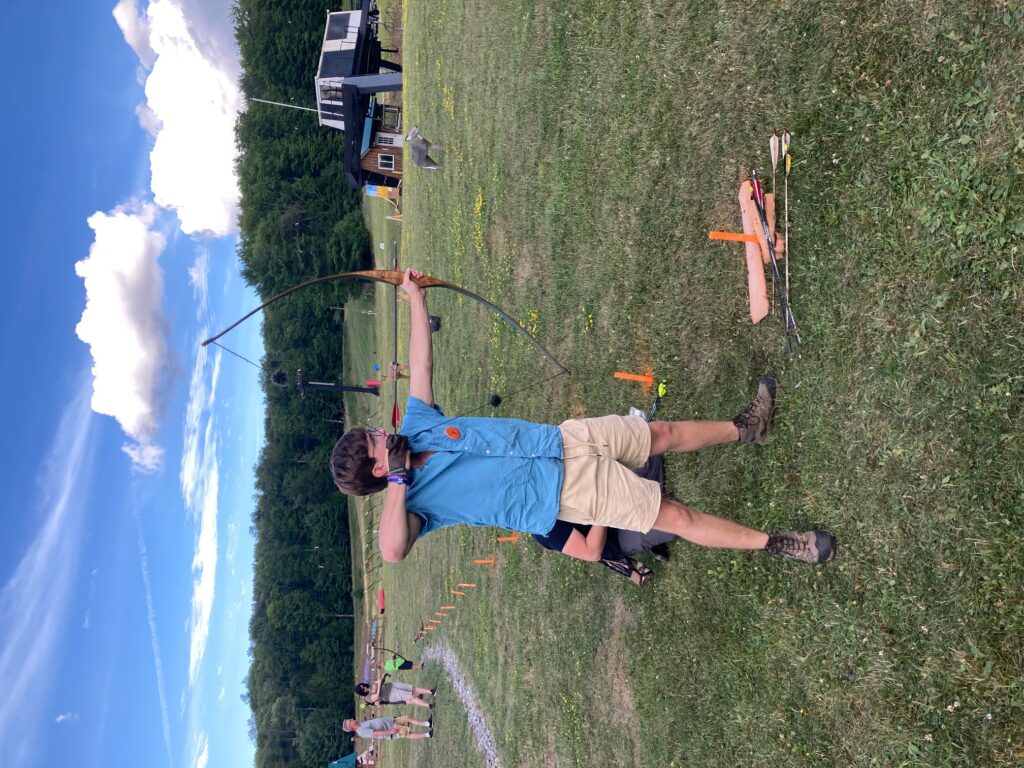
A dedicated young man practicing with his new bow at ETAR 2022. His shooting form was praised by an old timer as “a stone cold killer.”
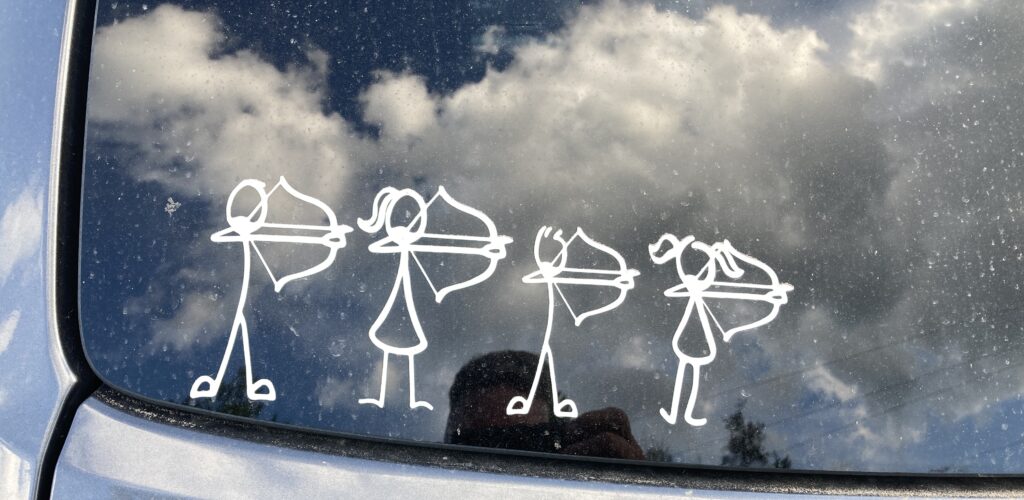

Traditional archery legend Fred Asbell helps Dave improve his bow grip
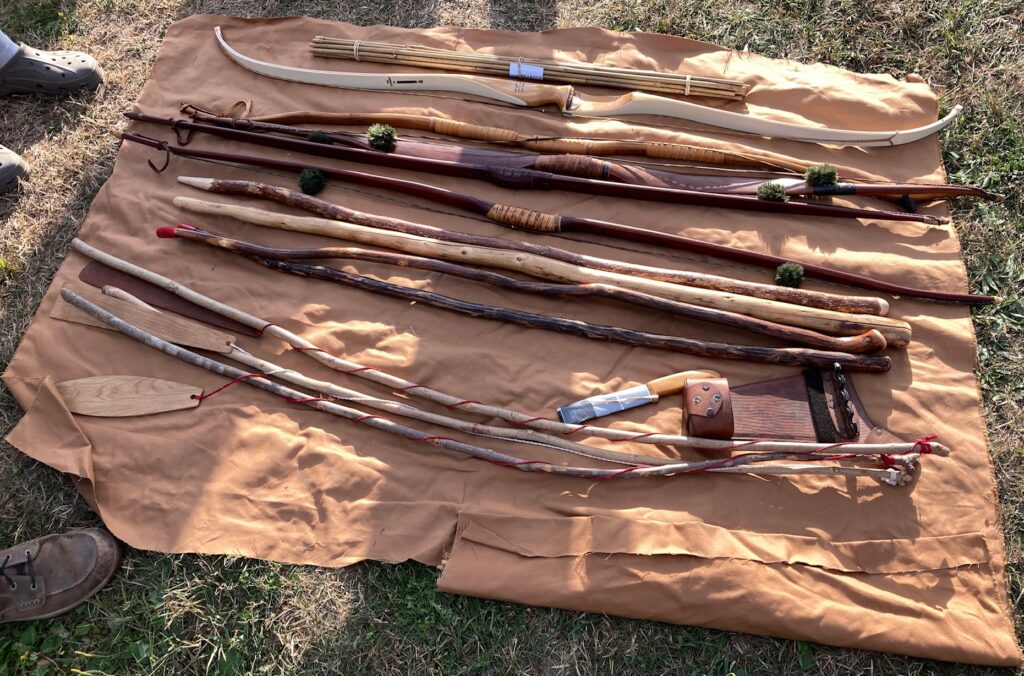
The swap-meet is probably the most exciting opportunity to acquire raw materials, rare items, hand made archery stuff. When it first started the place was a zoo! Probably a thousand people excitedly milling about looking at all kinds of neat items laid out on blankets
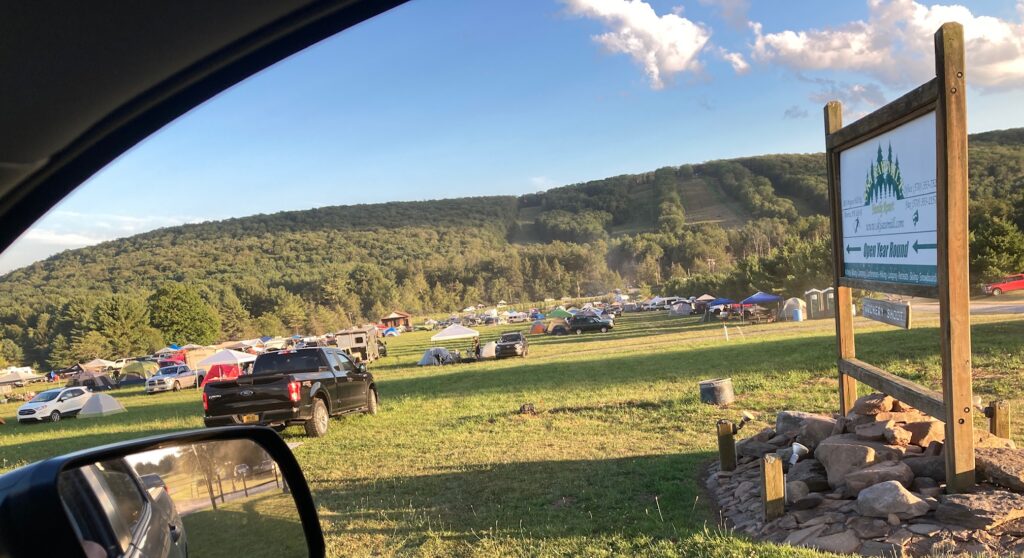
This photo does no justice to the huge number of tents and campers we saw at ETAR 2022


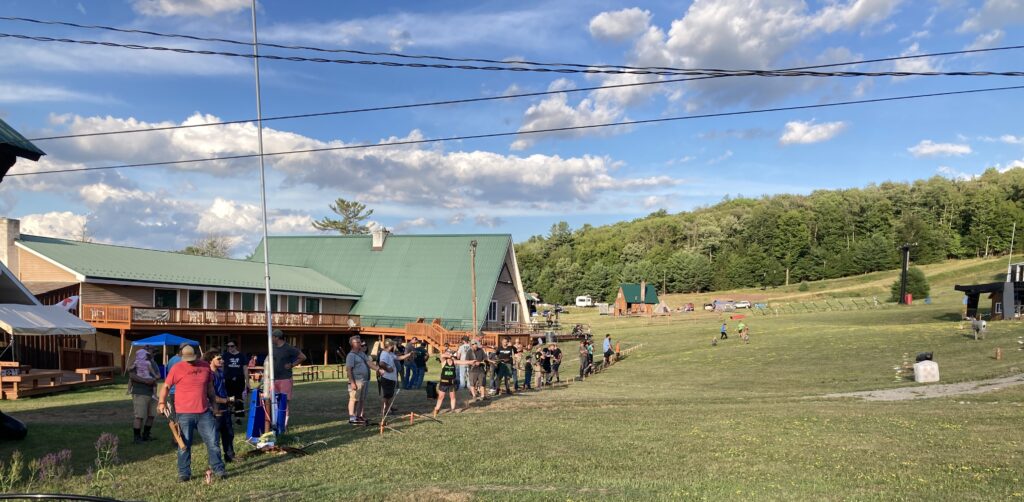

The all-American man who got me back into traditional archery. Jack made me a set of cedar arrows twenty years ago that now sit as a remembrance to this amazing human being. Dear Jack, it is good you are not here to see what has happened to your beloved West Point, your beloved US Army, or your beloved America…but don’t worry, we will fix it
By Josh • Posted in
Family •
No Comment










